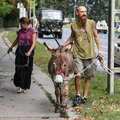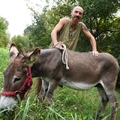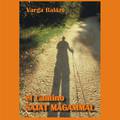The venue that year:)
ENG:
This letter (or rather “retrospective diary”) was written in March 2014 in 20 pages, which was then sent to 20 of my friends. The unsophisticated style occurring sometimes is due to the primary audience of friends. On those reading through themselves, it usually had a nice impact: many of them reported meditative experience pulling out of everyday greyness, that’s why I make the whole of it available here, in 12 parts. Eventual supplements will be always in footnotes. /CLICK HERE for the former parts/
/…/ Next day finally I got to the pilgrim mass, which is always a cathartic experience for the arriving rovers considering the hardships of the way. When I came out from the cathedral, Rocinante was donkey-petted by an Austrian woman who’s already walked along 4 ways, is now a volunteer in one of the local private albergues and is planning for years to walk along the longest intra-Iberian Camino, the Via de la Plata starting from Sevilla – with a donkey. She is luckier than me ‘cause I didn’t have the opportunity before to talk to anyone who’s already pilgrimages with a donkey. Maybe I was a sign for her too...1 (Since then she has already visited me twice in Muxia, besides she has also spent a few days in the monastery nearby, where – spoiler alert! – I could finally place Roci.)
It was quite late when I started to head towards the ocean because the time went wasted with stuffs like visiting a woman with El Italiano. This woman wanted to buy a donkey in principle, but of course it turned out that she didn’t… How is it, if I accidentally don’t waste my time, then others will do it instead of me?? This has been the case all in my life even back in the exam periods… With Alba we also called the man in Monte do Gozo who was interested in buying Rocinante, with whom I failed to bargain because of language problems. He would like to buy it for her daughter as a hobby pet, but he wanted to bargain it surrealistically and I don’t exchange my saint pilgrim golden burro for coins… So the night reached me on the way again, but I found an awsome stable, divided into two parts: one with hay, the other with horses. We slept in the one with hay ‘cause if Rocinante starts to bray to the horses as usual, señor horse owner may come out of the house and I will be in trouble.2
It the autumn it was a big luck that I could leave Roci at Mayka’s and could head to the ocean alone from Santiago, because there are many barriers on the way there, which is impossible to accomplish with 4 hooves (e.g. circle beamed wooden bridge with enormous gaps, which put me in life danger even with hooves of my size 44). Now I had to solve these impossible situations. I barely remember anything of these days: it was hardcore marching and nothing else.
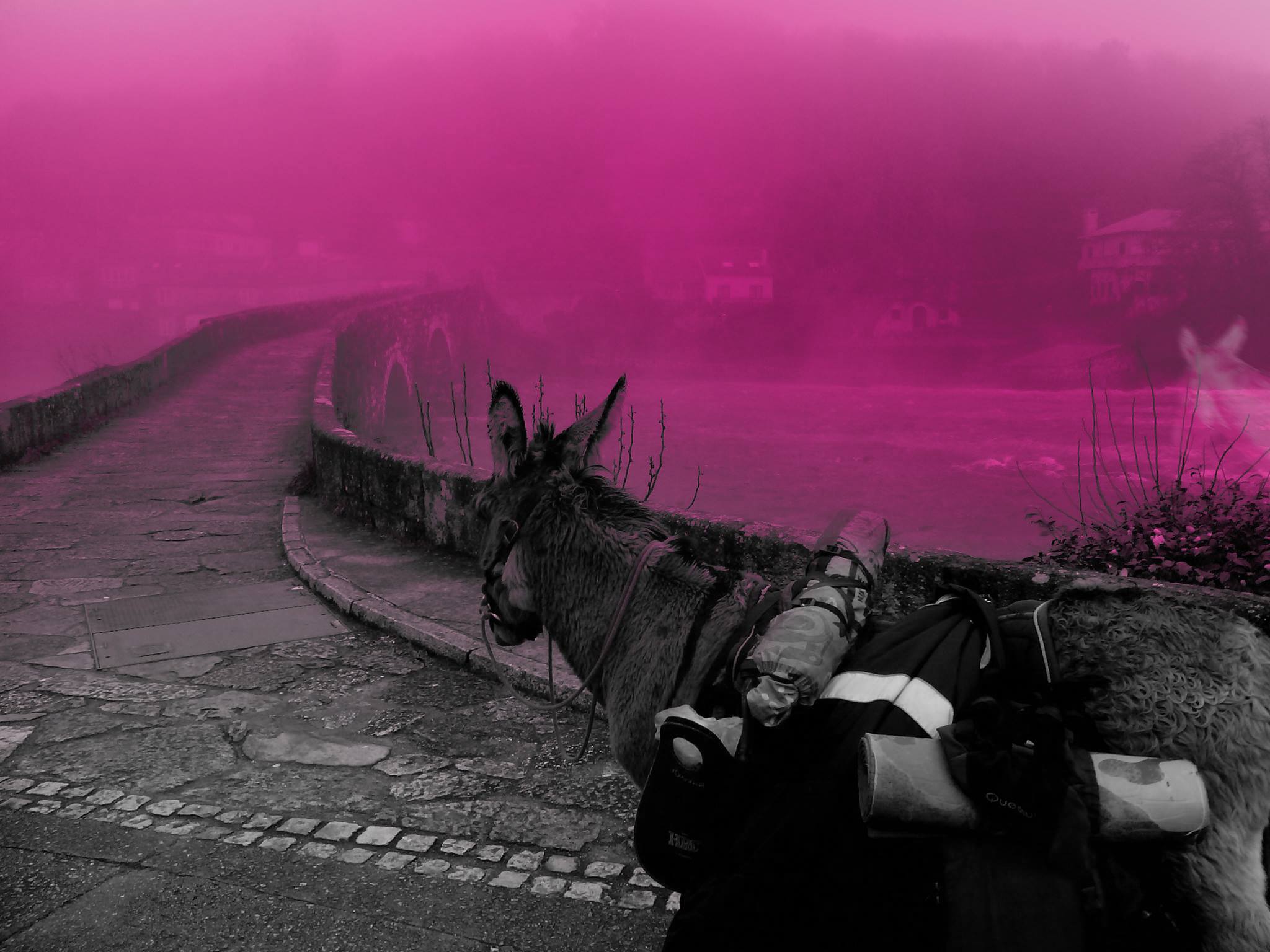
Way to the ocean: Camino de Fisterra y Muxia
The February full moon horror night has also come when I realized not only the Camino repeats your life in small, but this small Camino of mine also repeats the joys-crises-waves of the big one – in smaller design. As in the autumn there were bunch of community experiences and personal talks, now only one was from both, or as after Santiago, while still marching towards the ocean I had a chance to be alone, turn inside and deal with myself, now I had only one afternoon (when I left Roci in Monte do Gozo municipal) – and stuff like that. So now the time has come to repeat the storm of the century that was preluded by wandering-in-the-same-village-for-hours-and-finding-no-signs. (In these villages there’s totally no chance to find anyone on the streets after dark.)
When I got out of the village, for a long time there was no sign of another, but there was a woody hill 200 meters from the way, so I thought this is the place where I give my tent the coup de grace. This execution was so successful that I found the whole collapsed and stuck to me in the night. Water flew everywhere; you couldn’t even support the tent’s wall effectively. With my other hand I tried to put my clothes and my socks dripping from wastewater, the crippled lamp in my mouth and Rocinante languishing outside, no better than me. It was an indescribably long and massive torture; moreover it was outside the Camino so if, say, a tree falls on me or something, then no one finds my corpse for weeks, and this would be so derogative. We left the place still in the dark, in the middle of the storm marching along in the rain, soaking wet, to the village of Olveiroa, where we arrived to the albergue municipal for the opening (1pm).
In Olveiroa is the world’s best Galician municipal! I could cook, do the washing and sleep a damn good, with other pilgrims only flowing in late afternoon, moreover they all (there were approx. 6) chose the other dormitory so I had an own room to dry and pull myself together. In the evening they made a fire in the kitchen’s fireplace, there I remained alone until midnight, and I could dissolve the mental traces of vicissitudes in idyllic meditation again.
The reward for tolerating my ordeals without complaining was the sunshine. This is a beautiful part with mountains, ocean, moreover the Lord has provided his sign of peace after flood at the sky on several times:

Here the way splits: you decide whether you get to the Ocean heading towards Muxia or Fisterra. Along the Muxian way you find a little village, San Martiňo de Ozón, where a couple of hippie-like people are farming in a building of an old monastery, and pilgrims can also have an accommodation for donativo (=donation). I heard a lot of this place and something was telling me inside maybe they would like to have a donkey.
And so it happened!
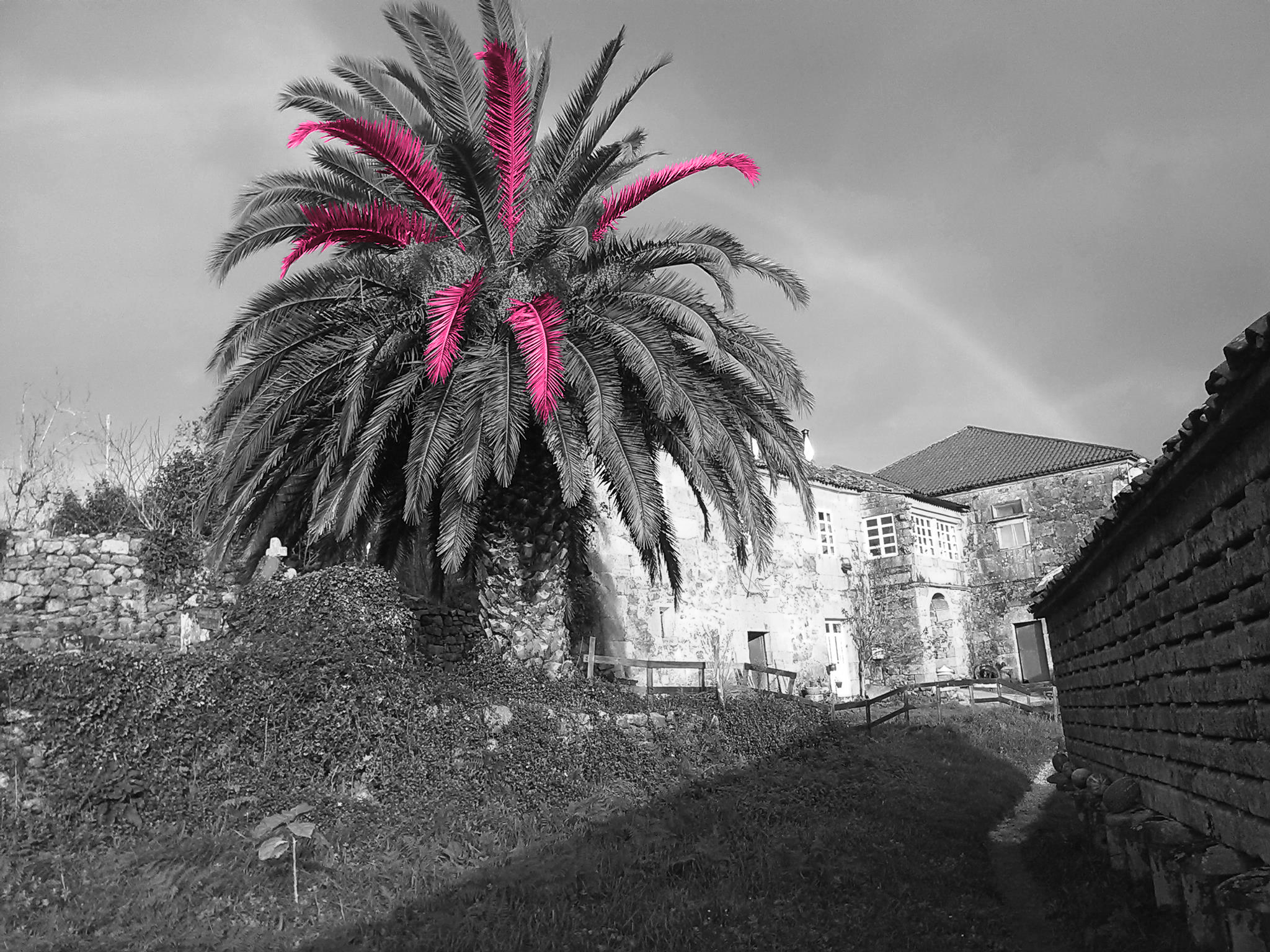
Mosterio de San Martiňo, one HQ of the Aurora de los Caminos
The monastery includes a huge grassy field and also a smaller barn where there’s place for a donkey next to their five sheep. This is a „cooperativa” (which must be a legal concept I guess), you can join them for periods, like a volunteer. The founder, Marta rents the monastery building from the Santiago church, with no monks anymore but still with a medieval feeling. This is also the same kind of cultural mix, which is a characteristic of whole Galicia: Christianity is combined with Celtic traditions, and here they are also doing yoga, playing music for pleasure, archery and knightly exercises (etc.). There live children and older people too, they have guests for lunch and dinner almost every day from here and there. But obviously mostly people of derailed lives find these kinds of places, so there are some weird faces. One of the lads immediately greeted me in Hungarian, he’s learnt it some 20 languages during his wanderings... They also have a webpage: www.auroradeloscaminos.org ; https://www.facebook.com/profile.php?id=100004402510060&fref=ts .
The next day I headed further to Muxia, which is only 9 km from here on the Camino so there was time even for a little getting-lost... The Albergue Delfín looks at the ocean bay, I had to ask for the key at the florist next door, but there was still siesta time – there’s everything closed in Hispania early-afternoon. Until this time we walked up the hill from where you can see the sea, the village and the Virxen de Barca (the pilgrimage church erected to the sailing Virgin Mary), which I especially like in this cultic-celtic environment, even with a burned roof:
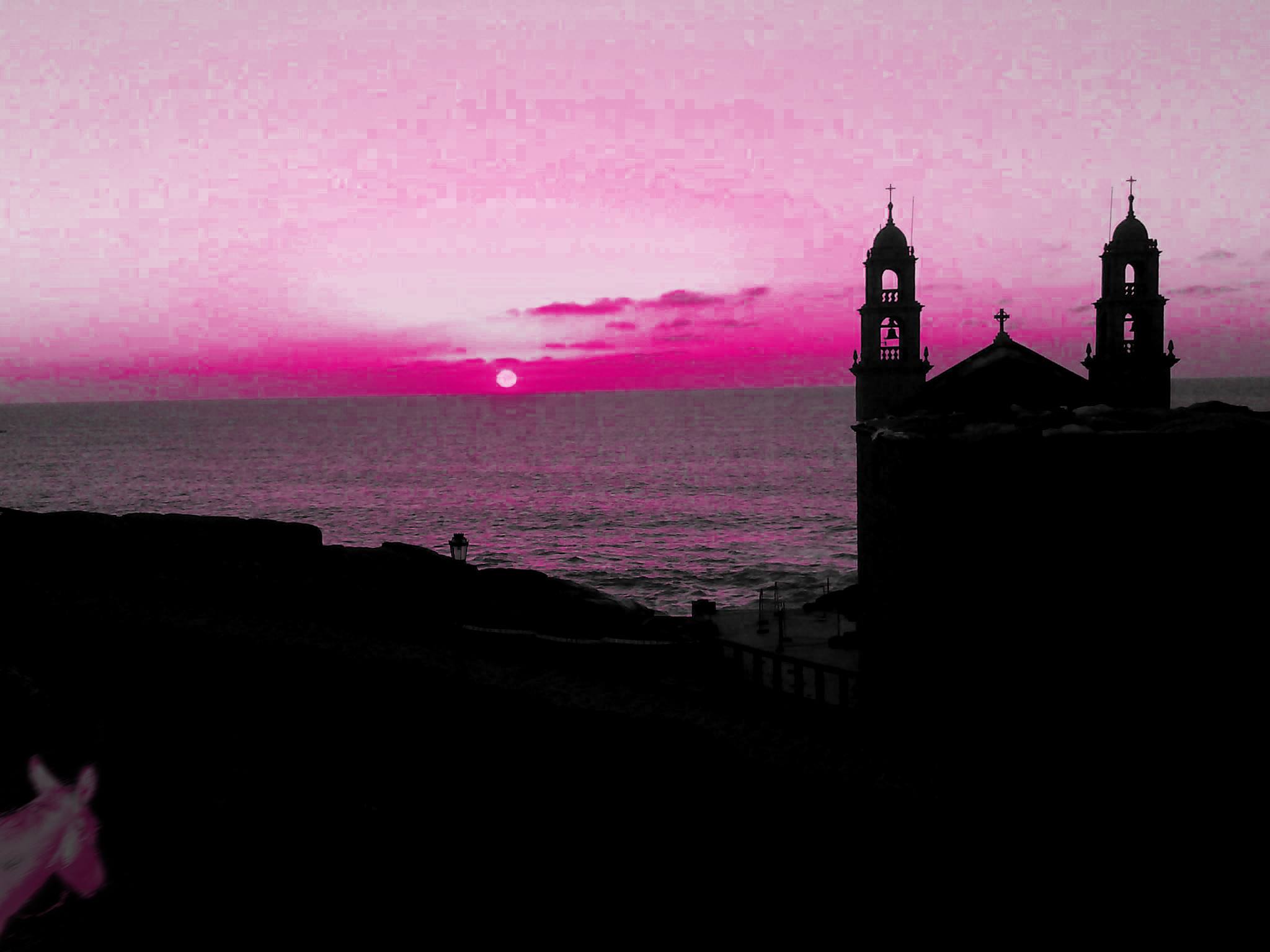
Santuario Virxen da Barca /Muxia/
There was a US woman who immediately went off on the packed donkey ‘cause she works with cargo lamas at home, in the mountains. Beautiful job, just don’t cross their way when they spit... Next plan is ready: Camino with lama! Even before Portomarín I passed an ostrich farm, so I have the following animal-assisted pilgrimage too: riding an ostrich… hmm, that would kick ass…
I found horrible conditions in the Delfín: from the lot of raining all of the walls and other things made of organic material became moldy, but in three days I made the place lively and from that day on I was waiting for pilgrims who didn’t really want to arrive ever since. There’s been some 25 of them at all, some of them for two days, but all in all, this isn’t even enough for the breakeven point. In general the people are coming in greater number from around Easter that was very early last year, and be in turn very late this year.
While the big cleaning I succeeded to break a lampshade, which I tried to replace before Balázs the owner returned, but the same I didn’t find (day by day I was chasing the lady at the furnishing shop with a dictionary in my hand) and the approximately-same would have cost some 70 Euros that I didn’t have. So at Easter time with the anticipated mass coming I would like to go out to Santiago with the flute and the donkey and collect some money ‘cause – besides the lampshade – not only me but little by little Balázs (who has already returned) will also starve to death. The rent had to be paid in the winter too what he spent in Budapest without any income. In the middle of April will arrive two volunteer hospitalera (Rose & Melinda) and in turn I will walk the donkey a little bit and burn something I should get rid of in Fisterra (because this tradition is one I directly practice).
The first night Roci spent here, behind the albergue, and the next day I brought him back to the monastery in San Martiňo where he is permanently in the near. More precisely, with no packs this time he was carrying me. This 9 km was so fucking entertaining… This picture was taken from donkey-back, only from the glare shining into my eyes his shadow is missing. Smashing fun! In the background you see the mountain with the observation tower in the tip of the peninsula, on which Muxia’s been built. Plus ports in the bay:

Sometimes people from San Martiňo stop by to chat when they come to shop in Muxia, besides I also visited Roci once, but in the absence of pilgrims mainly Luis the neighbor means the local relation to me. There was also wifi from him next to the wall until his router didn’t go wrong. He’s a gorgeously fashionable florist in his forties who can also give you dance lessons but in fact it’s a mystery from what he makes ends meet, ‘cause I’ve never seen costumers in the floristeria (of which there’s also another in the village of 1500 inhabitants. Plus there are two furniture stores, four banks, a taxi station, a diving shop, a costume shop for children… a little bit different than those with the same population at home where usually there’s only a pub and nothing else – OK, maybe another pub.) Luis has a wife and a cool little daughter, but in the meanwhile he does things like singing in a chore, playing the bagpipe, always preparing proper decorations for every occasions in the flower shop, spinning (!), making lace (wtf?!)... My favorite thing of all is the parquet-cruiser dog in the shop who he combs all the time and fixes her hair with rubber ring.
The other day he brought me some seafood called percebe for tasting, which is mostly similar to the feet of a dinosaur, highly expensive and you can only get it by scratching the coastal cliffs that the percebe hunters used to die in. In Hungarian, maybe it is called “sea acorn” and, yes, its eatable part is very much like the acorn of a baby. National starter of Galicia. (left: percebes; right: carrot)
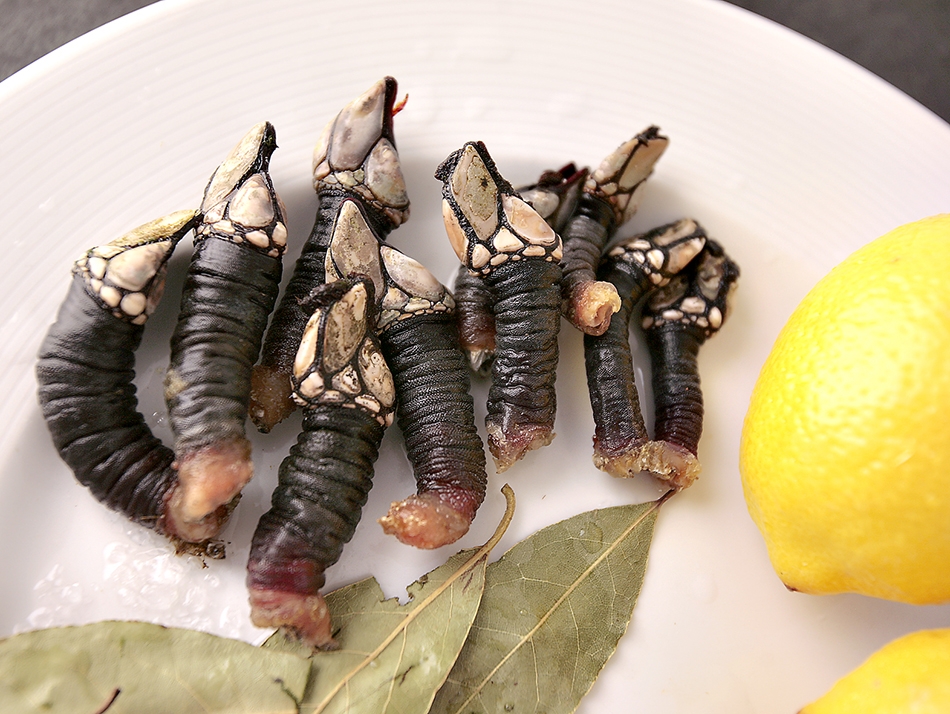
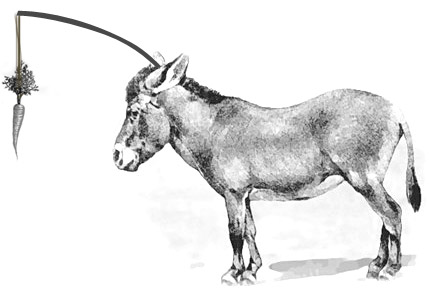
But mostly I live my everyday life in the potato-carrot-onion-pasta square and thus am continuously hungry. I thought that during my long pilgrimage I have already maximized the opportunities of reducing the consumer needs, but now it seems that not. Now I spend less, and only for food. I eat carrot with everything, soon I become a rabbit. If, say, it’s 5 cents less than the potato, I prepare mashed carrots instead of mashed potatoes, with oil and onion as topping. There’s only a small cooker here, but the very limited combination opportunities mobilize an extraordinary creativity in my cuisine. With spices, I say, one can make magic...
If things happened this way, I thought to give it a try how would I cope with being a vegetarian, and for 3 weeks – we can as well call it fasting – until Balázs was still away, I actually didn’t eat meat and fish. Then, you can be without it; I could devoid meat without problem. But yesterday, for example, two Italian pilgrims threw away two vacuum-packed not-so-fresh salami, nicely selectively: the packet among the plastics, the content among the organic. Of course I took it out and washed it. Sshit, it’s meat!! The fuck with wasters and the squeamish ones (and sometimes with Italians, obviously, wehe.) On one hand, it must be bad for them, on the other THE FUCK WITH THEM, GET OUT TO THE WAR FOR A LITTLE TRAINING.
Meanwhile the thought started to annoy me that from March on my monthly income is 0 HuF, as I don’t have 30 days officially worked hours in the previous 1 year – no social assistance anymore. But the student loan has to be paid, and what came to my mind only a few days ago: social insurance, as well. For a few days I have a toothache ’cause of a deep hole in it, in which the food gets stuck, I’m on the way to find a solution… Well, these things are very much likely to be included in the changing of living space and lifestyle, whatever. /.../
1 This is Nicole with whom we have already changed letters and sometimes meet if she can be found around Santiago. When she explained to her psychoanalyst that she’d like to be a pilgrim with a donkey (which idea she’s temporarily dropped), he immediately came with the interpretation: “how cathartic the thought could be to share the too big burden with someone by transferring it to him.” Hmm, yeah, who’s got too much..
2 After this case I slept there several times and it turned out that my fear was causeless: the horse owner is a señora and instead of sending me to hell she rather gave me food when she detected my presence, at the best time then. That was just... a real pilgrim experience.

